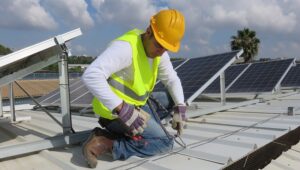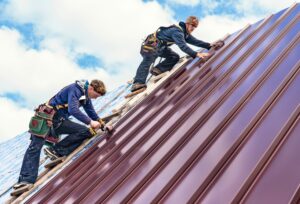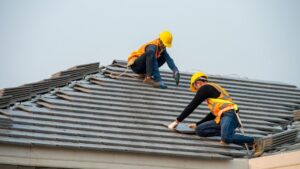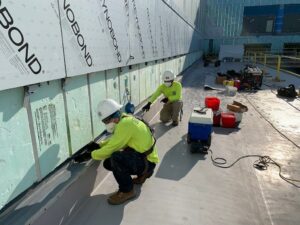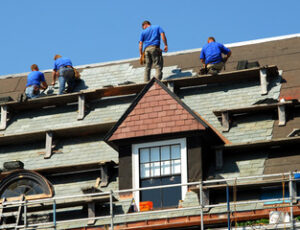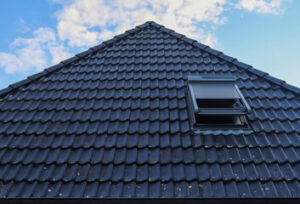Visually inspect your roof regularly, especially after significant weather events. A damaged roof can lead to water leaks and a variety of costly problems.

A roof inspector will look for things like shingles that are buckling or curling, stains, moss, and cracked or missing flashing or fasteners. They will also check the condition of the gutters and downspouts. Visit https://www.corpuschristiroofingco.com/ to learn more.
It’s important to prune trees regularly to keep them healthy and in good shape. One major reason is to reduce the risk of damage to your home caused by falling branches. Trimming your trees can also help reduce the amount of shade they cast and allow more sunlight to reach your roof.
However, you must know what you’re doing when it comes to pruning. If you don’t, you can do more harm than good and possibly kill the tree.
To make a proper pruning cut, it’s crucial to locate two key landmarks: the “branch bark ridge” and the “branch collar.” The branch bark ridge is the raised area of bark at the union of the branch with the trunk or supporting stem. It’s usually easier to see on deciduous trees than it is on conifers. The branch collar is a slightly swollen area around the base of the branch where it meets the trunk. You should never cut into or behind the branch collar, as this can lead to wood rot problems later on.
You should also always make sure your pruning cuts are clean and properly angled. This will reduce the chance of disease, insect infestation, and structural failure later on. The angle of the cut should match the incline of the branch that’s being removed. If you’re trimming a large branch, saw the first undercut halfway through the branch and about a foot beyond where it intersects with the trunk. Then, saw a cut downward all the way through the branch a few inches farther out from your first undercut. This will remove the extra weight and prevent the branch from tearing away from the trunk.
Other important considerations when it comes to trimming your trees include removing dead branches, thinning the crown, and shaping the crown. Crown thinning involves reducing the number of branches in the tree so that it can grow taller and thinner. When doing this, be sure to maintain a single dominant leader, which is the straightest and strongest branch of the tree. To do this, remove all lateral branches that are growing upright, as these will compete with the leader and weaken it. Also, be careful not to remove more than 25% of the canopy at one time, as doing so can stress the tree and even lead to death.
Clean Your Roof
As the old saying goes, “An ounce of prevention is worth a pound of cure.” This is certainly true when it comes to your roof. Regular cleaning can prevent minor problems from becoming major ones and extends the lifespan of your asphalt shingles.
One of the most important things you can do is sweep the surface of your roof to remove any debris that has accumulated. You should also check that the gutters and downspouts are free of debris. If you notice any areas where algae or moss are growing, you should clean those areas. It is best to hire a professional for this task if your roof is over a single story.
The next step is to wash your roof with a noncorrosive cleaning solution. Using the correct water-to-cleaning solution ratio can avoid damaging your shingles. Be sure to test any chemicals on an inconspicuous area before using them on the entire roof. It is also a good idea to rinse the chemical afterward with clean water. This will prevent the runoff from harming any plants or vegetation around your home.
You should also examine the insulation in your attic. Proper insulation can prevent ice dams from forming and keep moisture away from the sheathing and rafters. It can also help save you on energy costs.
It is also a good idea to check the neoprene pipe boots around your vent pipes. These can crack over time due to UV light from the sun. When they crack, it allows water to leak into your home. This can be quite costly and is easy to prevent with regular inspections and maintenance.
These are just some of the many roofing maintenance tasks you should perform on a routine basis. They can make all the difference in preventing damage to your home and saving you money. By doing these simple tasks, you can ensure that your roof is protecting your family from obvious dangers like weather events and falling tree branches, as well as less-obvious risks such as excess moisture which could lead to mold.
Buff Minor Scratches
If you don’t buff minor scratches from metal roof panels they will collect water that can rust the area. Using mineral spirits on a cloth, simply wipe the scratched surface and rinse. If it still looks bad, you can touch it up with a metal touch-up paint pen that matches the color of your panel. Avoid spray cans, which are not ideal for touching up your roof because they cannot be applied accurately to small areas.
If you have nearby trees that brush against your roof, you should get them trimmed. This will prevent them from scraping the paint, which could cause scuffing and rusting. A professional can also inspect the panel seams and fix any loose or separating ones. If these seams aren’t properly sealed and secured, water can leak between them and into your home.
Check Flashing
When it comes to roof installation, flashing is an important protective barrier that eliminates leaks and rot. It’s used in areas of your roof where different parts meet, such as chimney structures or skylights. It also protects seams and other vulnerable areas like the roof valleys, which are prone to leaks.
When roof flashing becomes damaged, it’s important to address the issue right away. If not repaired quickly, water can enter the building and cause major damage. It’s best to hire a professional roofing expert to assess and repair any cracks, holes or other signs of damaged flashing.
Cracked flashing may result from inclement weather or physical damage, such as hail or debris. Even a minor crack can lead to a leak. If you notice water stains on the ceiling or walls, it’s likely that the flashing is to blame.
Flashing is typically made of galvanized steel, copper or aluminum. The material choice will depend on your climate and the specific area of the roof where the flashing is installed. If you’re not sure which material to choose, talk to an expert roofer.
The flashing itself is designed to fit into a groove or channel in the roof and be caulked into place. During the installation process, the roofer will use a high-quality caulk that’s designed to last for years. It’s a good idea to check the caulk regularly and replace it as needed to maintain its effectiveness.
In addition to preventing moisture intrusion, the caulk around the flashing helps to direct rainwater and snowmelt away from the most vulnerable areas of your roof. It’s important to examine the caulk regularly for signs of degrading, including bubbling or flaking. In most cases, the caulk can be resealed with roof cement.
It’s also a good idea to regularly check the flashing itself. Look for raised nails or screws, which are a sign that the flashing is loosening and needs to be tightened. You should also be on the lookout for any missing pieces of flashing, which are a serious problem that can only be fixed by replacing them.


